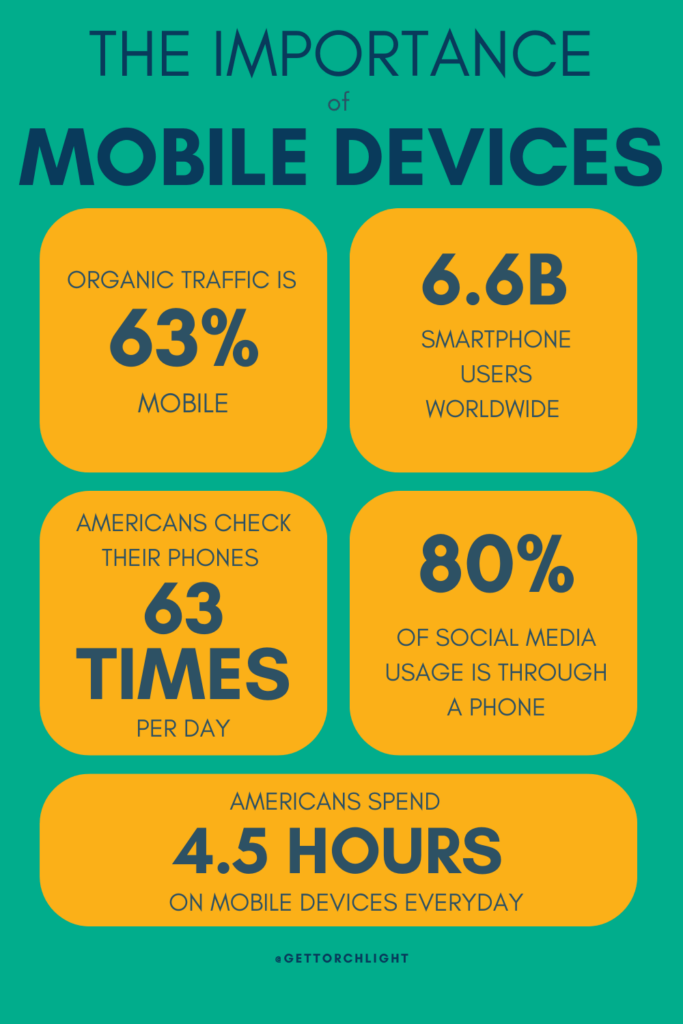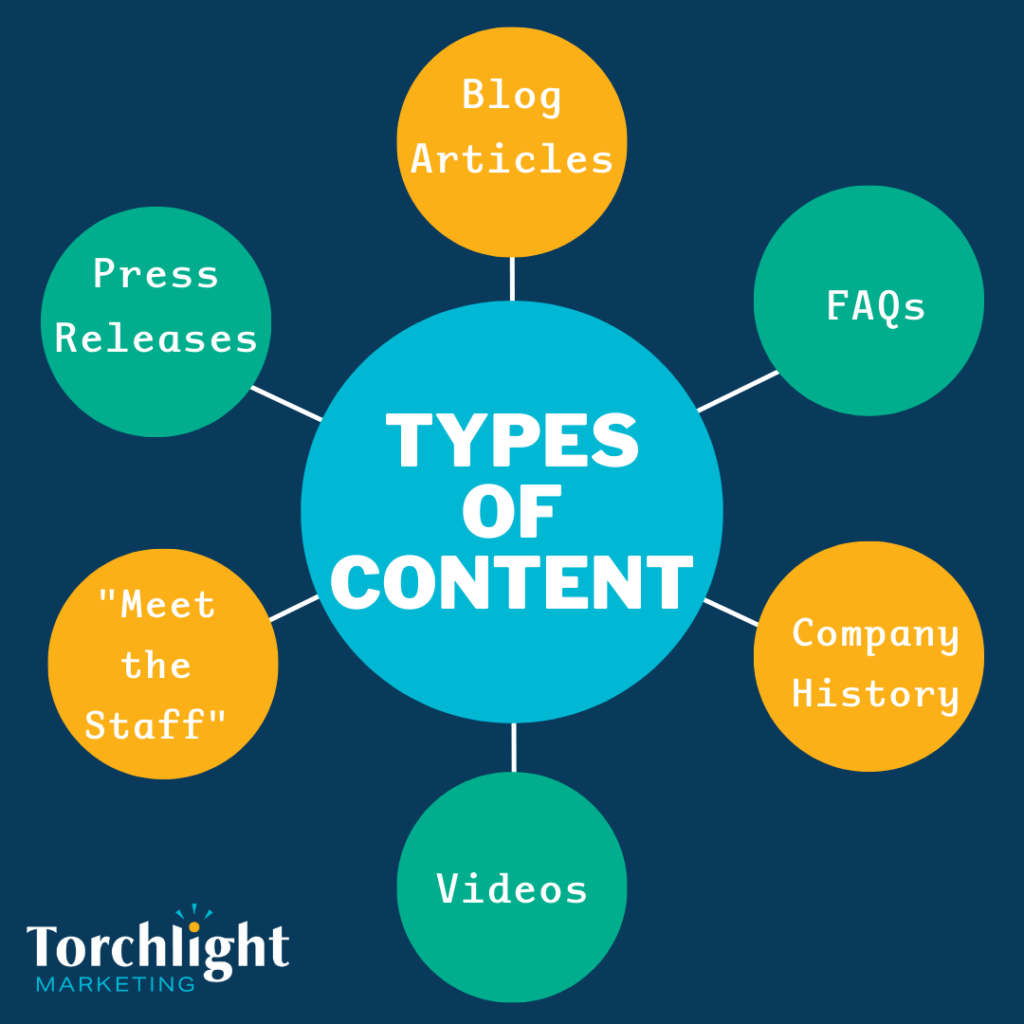Have you ever visited a website and immediately felt overwhelmed or confused because you didn’t know what to do on the page? It’s like approaching a front door with a sign that says ‘do not knock’, it doesn’t have a doorbell or an intercom– you conclude that they must not want you to be there. Without a few crucial elements on your website’s homepage, this is the message you are sending people who come across it.
In digital marketing, the homepage of your website is your digital “front door” and plays a crucial role in attracting and engaging visitors. To ensure your website stands out and drives conversions, it’s essential to integrate these key elements for when visitors click on your site. Today we’re going to dive into 10 of them.
Let’s get started!
1. Clear and Concise Headline
The headline is the first thing visitors see when they land on your homepage. It should grab their attention, clearly conveying your unique value proposition. Today’s online world is fast paced, you have mere seconds to convince users that they’ve found the right place. Donald Miller’s “Grunt Test” emphasizes the importance of delivering a clear message within the first five seconds of a visitor’s arrival. A concise and compelling headline instantly tells visitors who you are, what you offer, and how it benefits them.
2. Intuitive Navigation
A well-structured and intuitive navigation menu is vital for guiding visitors to the information they seek. Avoid overwhelming users with too many menu options; instead, prioritize the most important pages. Organize your menu in a logical manner, using clear labels that reflect the content visitors expect to find. A streamlined navigation system ensures visitors can effortlessly explore your website, leading to increased engagement and satisfaction.
3. Engaging Visuals
Humans are naturally drawn to visuals, making them a powerful tool for capturing attention and conveying information. Incorporating high-quality imagery or videos on your homepage enhances the overall user experience. Visuals should be relevant to your brand and industry, helping visitors connect with your message on a deeper level. Professionally shot photos, infographics, or videos can convey your brand’s personality, evoke emotions, and create a lasting impression. Bonus Tip: Avoid stock photos when possible.
4. Compelling Call-to-Action (CTA)
A compelling CTA is a vital element that prompts visitors to take a specific action. Whether it’s making a purchase, scheduling a free consultation, or requesting a demo, a well-crafted CTA helps convert visitors into customers. Place the CTA prominently on your homepage, using action-oriented language that instills a sense of urgency. A compelling CTA, coupled with an intuitive design, guides users towards desired actions and increases the likelihood of conversions. Bonus Tip: The fewer CTAs the better – don’t overwhelm your visitors with “Call now”, “Book an Appointment”, “Sign Up For Our Newsletter”, “Follow Us On Social Media”, and “Leave a Review”.
5. Testimonials and Social Proof
In a digital landscape filled with choices, building trust and credibility is crucial. Including testimonials, reviews, case studies, and social proof on your homepage showcases positive experiences and endorsements from satisfied customers.

Visitors are more likely to engage with a business that others have positively endorsed. Displaying customer testimonials, industry awards, or trust badges instill confidence, assuring visitors that they’re making the right choice by choosing your products or services. Bonus Tip: Invest in your community– pee wee baseball, food bank, etc. to show that you give back.
6. Mobile Responsiveness
With the dominance of mobile devices, optimizing your homepage for mobile responsiveness is paramount. A responsive design ensures your website adapts seamlessly to different screen sizes and orientations, providing a consistent and user-friendly experience. Mobile optimization is not only crucial for user satisfaction but also for search engine rankings. Mobile-friendly websites have better chances of ranking higher in search engine results pages (SERPs), attracting more organic traffic.
7. Prominent Contact Information
Making it easy for visitors to contact you is essential for building trust and facilitating communication. Display your contact information openly on your homepage, including your phone number, email address, and links to your social media profiles. Offering a visible contact form or live chat option further enhances user experience by enabling direct communication. Visitors should feel confident that they can reach out to you if they have questions or require assistance. They should also feel confident that you will respond back. Stating a timetable as to when they should expect a response will assure visitors that you care about their questions or concerns.
Bonus Tip: Now that you have your contact info prominent on your website, make sure visitors get a consistent experience seeing the same contact info on your social media profiles as well (this is also a very good SEO play!).
8. Clear Value Proposition
Clearly communicating your unique value proposition is crucial for capturing visitor interest and driving conversions. Your homepage should articulate the benefits of choosing your products or services and highlight what sets you apart from competitors. A concise and compelling value proposition answers the question, “Why should I choose you?” It should clearly convey the value you offer and resonate with your target audience, compelling them to explore further.
9. Relevant and Updated Content
Regularly updating your homepage with fresh and relevant content is key to retaining visitor interest. Showcasing your latest blog posts, industry news, or featured products demonstrates that your website is active and up-to-date. Fresh content not only engages visitors but also improves search engine visibility, driving organic traffic to your site. Regularly providing valuable and informative content positions you as an authority in your industry and keeps visitors coming back for more.
10. Homepage Loading Speed
The digital world is only getting faster and faster– and so are users’ expectations. Slow-loading websites can frustrate visitors, leading to high bounce rates and missed opportunities. Optimizing your homepage’s loading speed is crucial for providing a smooth and pleasant user experience. Techniques such as minimizing images and code size, leveraging caching, and utilizing a reliable hosting service all contribute to faster loading times. A fast-loading homepage ensures visitors can quickly access the information they seek, enhancing engagement and satisfaction.
Takeaway
Crafting an exceptional homepage requires a strategic approach and attention to detail. Each of the ten key elements discussed in this blog plays a vital role in creating an outstanding user experience.
From the clear and concise headline that communicates your value proposition to the fast loading speed that ensures seamless navigation, these elements work together to captivate visitors and drive conversions. By prioritizing these elements, you can create a memorable and effective homepage that not only attracts visitors but also guides them towards meaningful interactions with your brand.
If you’re interested in reading more, go “beyond the click” to understand the importance of ROI in your PPC campaigns! To learn even more about our services contact us on our website or give us a call at (805) 481-0118.




